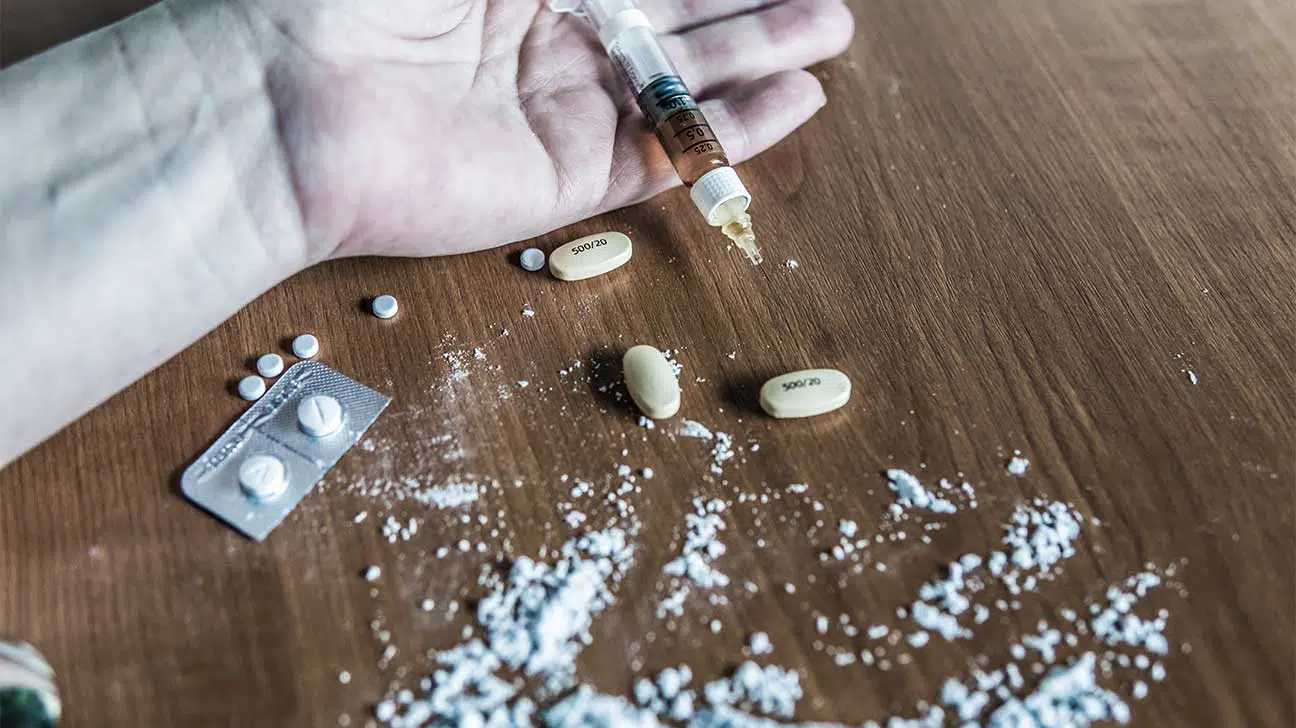Fentanyl Vs. Heroin: Which Is More Dangerous?
Fentanyl and heroin are both illegally manufactured synthetic opioids that pose high risk for abuse, addiction, and potentially fatal overdose. They are chemically similar but differ in potency.

Fentanyl and heroin are synthetic opioids that share many characteristics in common. Fentanyl and heroin addiction are similar in terms of signs, effects, risks, and treatment.
However, the emergence of fentanyl on the illegal drug market has caused a shift in drug use and the opioid epidemic, with an increase in opioid overdose deaths by almost 30% in 2021.
One is not necessarily more dangerous than the other, but fentanyl is much stronger than heroin and can therefore be lethal in lower doses.
Key Differences Between Fentanyl And Heroin
Fentanyl is 30 to 50 times more powerful than heroin and 100 times more potent than morphine. It is also identical to heroin in appearance, and cannot be differentiated when mixed together.
The analgesic effects are the same, but a dose of fentanyl that is a fraction of a heroin dose is equivalent in impact and delivery is more rapid and thus deadlier in unregulated dosages.
Heroin is a Schedule I illicit drug per the FDA and is illegal to manufacture, distribute, and use.
Fentanyl is a federally controlled Schedule II substance approved for specific medical purposes.
Pharmaceutical fentanyl is prescribed to treat severe pain from surgery and advanced cancer. Prescription fentanyl is usually administered in low doses as patches, lozenges, and injections.
Illicit fentanyl has many analogues, and is manufactured specifically for the purposes of magnifying the effects and thus increasing the cravings among people who are addicted.
Dangerous Effects And Risks Of Fentanyl
Because fentanyl is so much stronger, it crosses the blood-brain barrier and activates the central nervous system much faster than other opioid drugs, including heroin.
Illicitly manufactured fentanyl is sold on the same unregulated markets as heroin and in similar forms, as liquid or powder. Liquid fentanyl can be found in nasal sprays, eye drops, and candy.
The danger of fentanyl is that it looks identical to heroin. It is often mixed or “cut” with heroin and other drugs such as cocaine and methamphetamine and cannot be detected by sight, smell, or taste.
When people ingest fentanyl in lethal doses, they can die from symptoms of an accidental overdose, which are respiratory depression and prolonged lack of oxygen flow to the brain.
Narcan is the brand name of naloxone, which is a narcotic that can prevent overdose death when administered in time. With fentanyl, the window to administer naloxone is very narrow.
Dangerous Effects And Risks Of Heroin
Heroin is a semi-synthetic opioid that is used instead of pricier prescription opioids like oxycodone, for the addictive analgesic effects or pain relief, as well as sedation and euphoria.
The dangers of heroin are almost equivalent to fentanyl. The risk of overdose is high due to the fact that heroin is often laced with unknown amounts of fentanyl and other drugs to enhance the effects.
Heroin is also frequently mixed with contaminants, which gives brown powder and black tar heroin its darker color. Heroin that is diluted with cheap additives can damage internal organs.
Toxic chemicals and diluents in street heroin that are hazardous to health include:
- ammonia
- quinine
- baking soda
- sugars
- powdered milk
- chalk
- brick dust
- rat poison (strychnine)
Any heroin that is injected using unsterilized syringes and needles increases the risk of contracting blood-borne viruses and infections including HIV, hepatitis B, and hepatitis C.
Addiction And Dependence
Because of the intensity of effects that opioids have on the body and mind, use can ramp up quickly, leading to physical tolerance, chemical dependence, and ultimately addiction.
The faster an opioid crosses the blood-brain barrier and binds to opioid receptors, the more intense the euphoria. Euphoria is caused by spikes of dopamine, which impacts mental health.
The first “high” or rush of euphoria is never the same with subsequent use, but people who become psychologically addicted keep trying to replicate that feeling.
The surges and drops in dopamine levels create a cycle of intense craving, opioid withdrawal, and an uncontrollable need to repeat the process, regardless of the risks and consequences.
Substance use disorders involving heroin or fentanyl require phases of treatment. Methadone, buprenorphine, and naltrexone are used to curb cravings and manage withdrawal symptoms.
Finding A Treatment Program For Opioid Addiction
Recovering from opioid addiction, whether it is fentanyl, heroin, or both, is a challenging process that requires professional treatment.
If you, a loved one, or a family member is in need of help for an addiction, there are a variety of evidence-based addiction treatment programs that can be customized to meet individual needs.
Call Spring Hill Recovery Center today to speak with an addiction specialist who can provide information about navigating the addiction treatment process and treatment options.
- Centers for Disease Control and Prevention (CDC) – Fentanyl Facts https://www.cdc.gov/stopoverdose/fentanyl/index.html#:~:text=Fentanyl%20is%20a%20synthetic%20opioid,100%20times%20stronger%20than%20morphine.
- Centers for Disease Control and Prevention (CDC) – Drug Overdose Deaths in the U.S. https://www.cdc.gov/nchs/pressroom/nchs_press_releases/2021/20211117.htm
- Department of Health and Human Services – Prevent Opioid Abuse and Addiction https://www.hhs.gov/opioids/prevention/index.html
- Department of Justice/Drug Enforcement Administration (DEA) – Drug Fact Sheet: Fentanyl https://www.dea.gov/sites/default/files/2020-06/Fentanyl-2020_0.pdf
- Medical News Today – What is fentanyl? Uses, abuse, and side effects https://www.medicalnewstoday.com/articles/308156
- National Institute on Drug Abuse (NIDA) – Fentanyl DrugFacts https://nida.nih.gov/publications/drugfacts/fentanyl
- SciTech Connect – Street Level Heroin, an Overview on Its Components https://scitechconnect.elsevier.com/wp-content/uploads/2016/07/Street-Level-Heroin-1.pdf
- WebMD – Fentanyl Overdose and Adulterated Heroin: 4 Facts You Need To Know https://www.webmd.com/connect-to-care/addiction-treatment-recovery/fentanyl-overdose-and-adulterated-heroin


